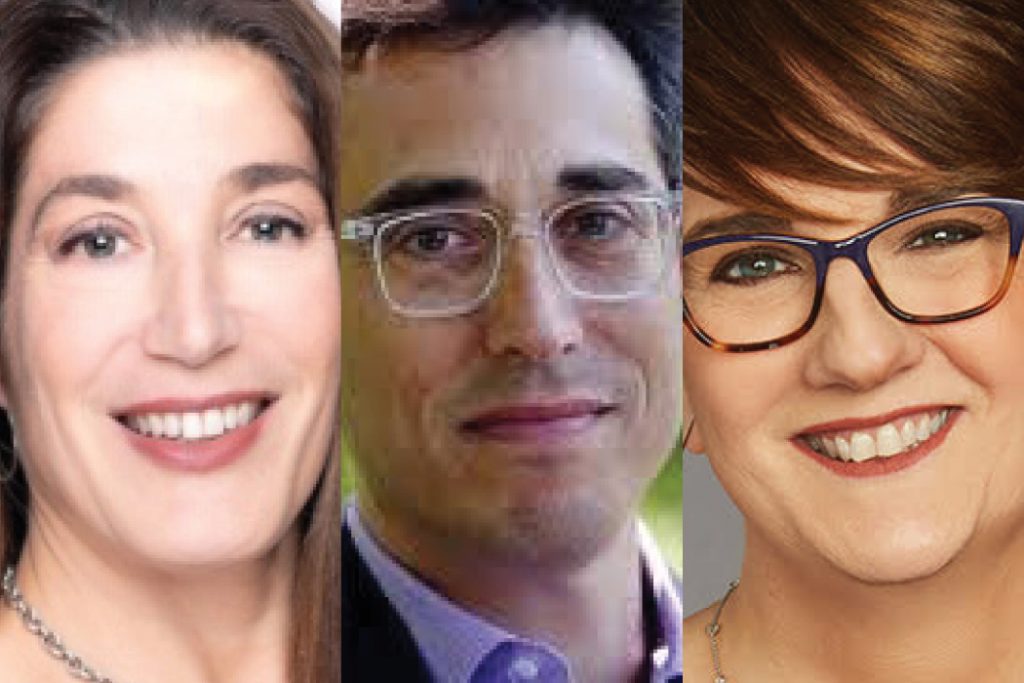The Rappaport Center for Law and Public Policy hosted a debate October 8 on Question 2 on the Massachusetts ballot that proposes ranked choice voting. The discussion between a proponent from each side served as a lesson on what ranked choice voting means and how it works.
Ranked choice voting would allow Massachusetts voters to rank the options in order of preference instead of having to vote for a single candidate. After counting all of the votes, if one candidate doesn’t have at least 50 percent of votes, the last place candidate is eliminated and the second-place votes are redistributed until one candidate receives the majority.
This system of voting is currently being used in Maine for both state and federal elections, as well as in local elections across the country. Elisabeth J. Medvedow, executive director of BC Law’s Rappaport Center, pointed out that ranked choice voting is not a partisan issue before turning the discussion over to moderator Sue O’Connell, commentator and analyst at New England Cable News (NECN).
O’Connell directed her first question to panelist Evan Falchuk, chairman and CEO of the Village Plan and chair of the Yes on 2 Committee. She asked, “Why is question two on the ballot and why do we need it?”
“This is responding to the problem that so many people talk about of feeling like you have to hold your nose and vote for the lesser of two evils in elections—feeling as if you want to vote for someone you really like but worrying that your vote might be wasted,” Falchuk said. “What we want is a system where voters are able to vote their hopes and not their fears.”
While Falchuk said this is an opportunity to fix our democracy, panelist Jennifer Braceras (above, left), director of the Independent Women’s Law Center and former commissioner of the US Commission on Civil Rights (2001-2007), argued the contrary. She said ranked voting would replace the current imperfect system with an equally imperfect, more complicated system.
“It’s not really as simple as saying, I’ll have a chocolate ice cream cone and if they’re out of chocoloate, I’ll take the vanilla, and if they’re out of vanilla, I’ll have a mocha or coffee, but definitely don’t give me pistachio. That’s how it’s explained, but that’s not how it works,” Braceras said.
“Ranked choice voting actually requires voters to have a level of knowledge about all of the candidates that they’re never actually going to have,” which means they are making choices based on very little information, she said. “That becomes problematic.”
Falchuk rebutted: “I actually have a much higher opinion of voters than what is being described here. I think voters are actually pretty smart and pretty sophisticated.”
Furthermore, he argued, “What we ought to have is a system where you get to rank your choices and where we can get a reflection of the true will of the voters. Is it perfect? No, nothing is, it’s human, but it’s far better than what we have today.”
Braceras acknowledged that “you could make the argument that ranked choice voting encourages voters to try all the flavors and to educate themselves about all of the candidates, and that’s a positive thing for our democracy and I certainly appreciate that.” However, she is skeptical. “I just think the reality is that is not going to happen. It exacerbates a problem that already exists, it certainly doesn’t fix it. I think it’s best when voters have a chance to make a binary choice and compare two candidates.”
Both panelists remained firmly attached to their arguments throughout the discussion.
Falchuk repeatedly brought up how ranked choice voting will eliminate the wasted vote dilemma and create incentive for voters to be informed and for candidates to build coalitions across political and ideological lines.
For her part, Braceras repeatedly warned of the complexities of the proposed system and how it will lead to more problems, such as lack of finality and transparency. Her alternative suggestion was a runoff election, in which voters are expected to return to the voting booth when neither candidate receives the majority of votes.
“If you want to talk about runoff elections,” Falchuk countered “it’s puzzling because there’s tons of data that show that fewer voters, as much as 35 to 40 percent, don’t show up for the second round of voting.” His point further illustrated the absence of a perfect solution.
In their closing statements both panelists hammered home their stances on Question 2.
Falchuk said, “Anytime we can make reforms in our country that encourage good citizenship, good behavior—and I’m talking about encouraging voters to pay attention, encouraging candidates to reach out to voters, encouraging candidates to talk to each other and not try to beat up each other—I think that makes for a better country and I think that’s what Question 2 is all about.”
To which Braceras responded, “And I think that anytime you make voting more complicated it hurts our democracy. Voting should be as simple and as clean as possible, and as accessible to as many people as possible.”
Photo, from left: Jennifer Braceras, Evan Falchuk, and Sue O’Connell


